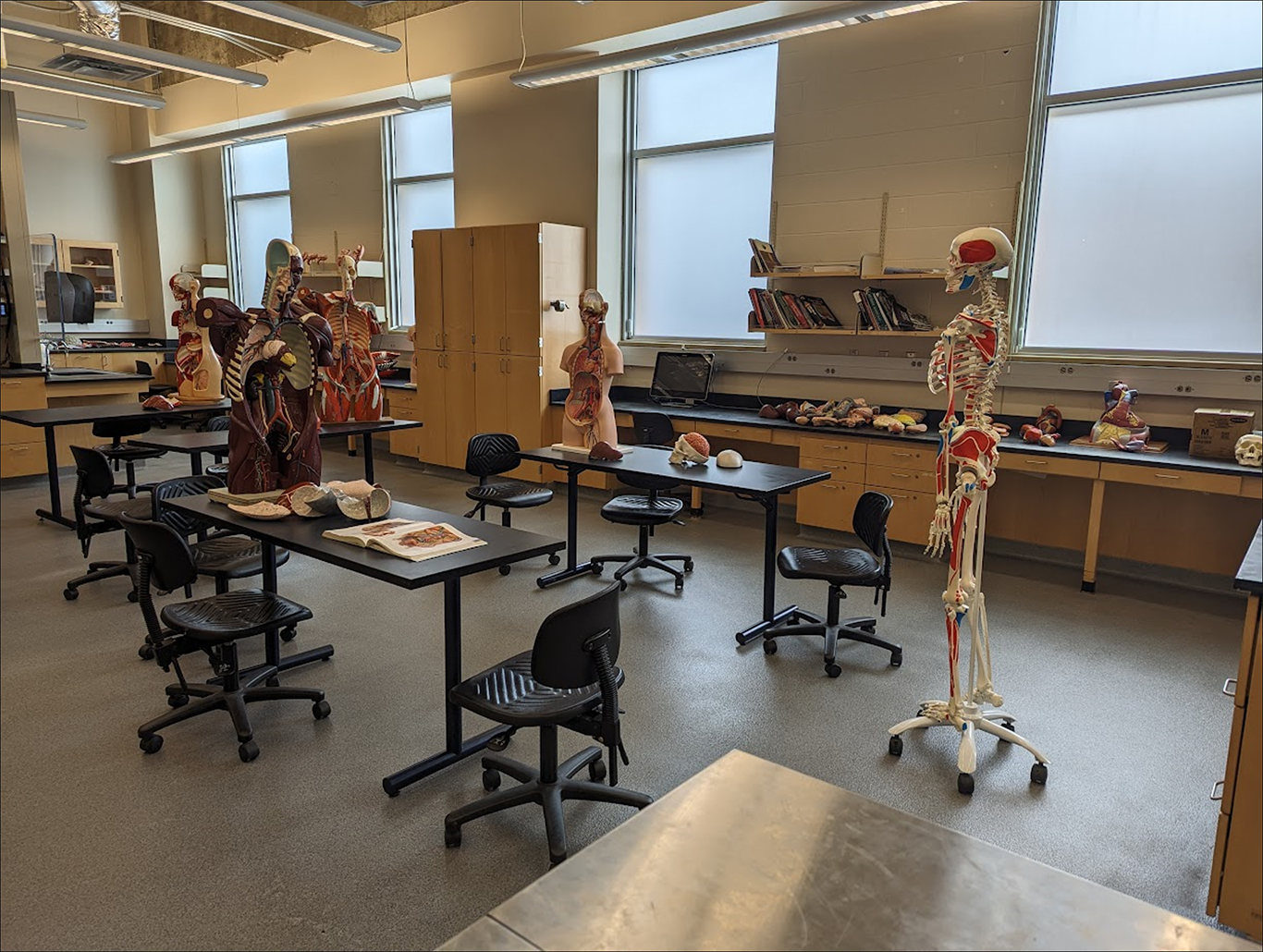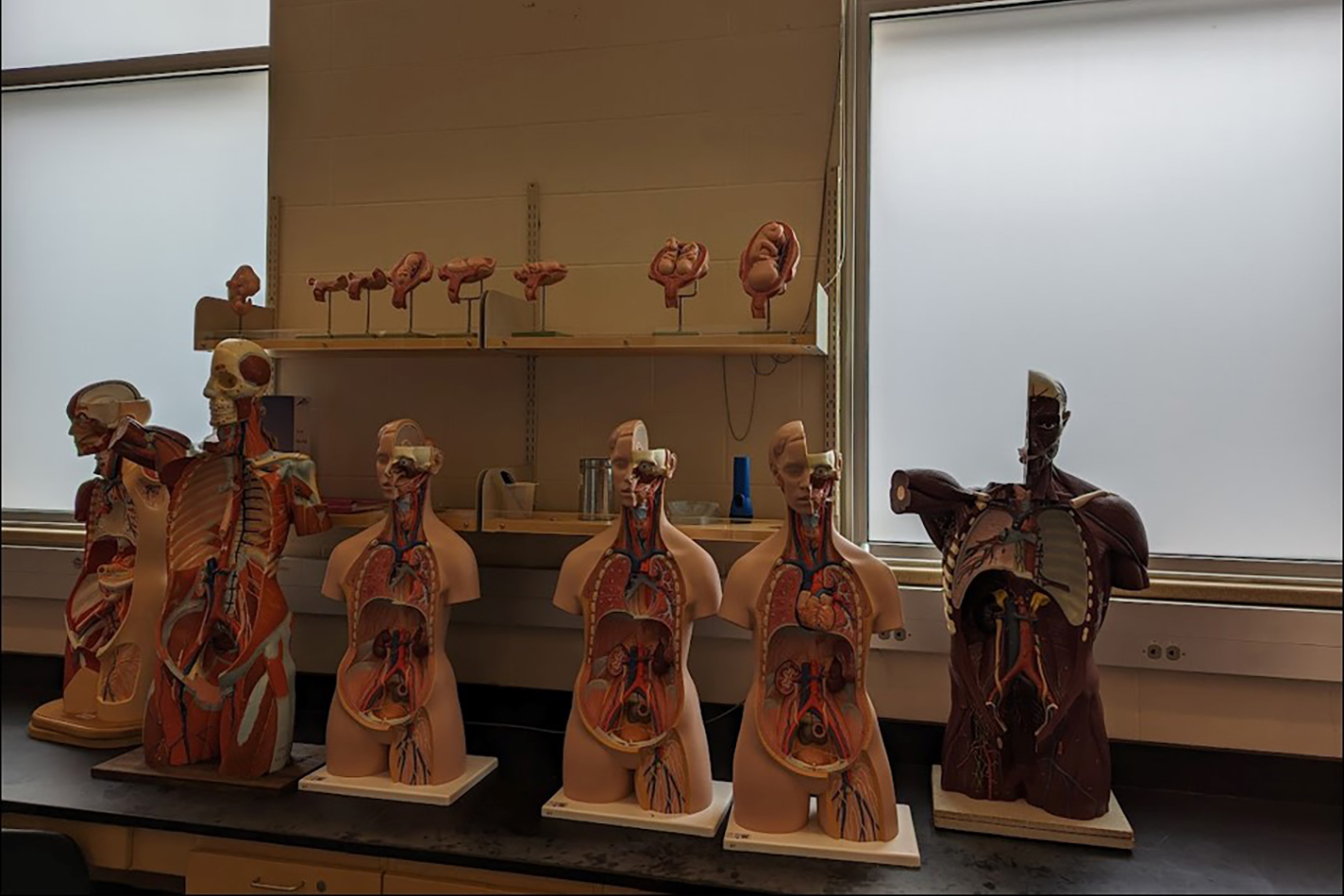The Cadaver Theatre is a transformative experience in which anatomy students learn from their first patient about the human body. Each cadaver tells its own story about living life in health and illness. These cadavers are the true teachers of future healers.
The Cadaver Theatre
MSU Moorhead is one of very few undergraduate institutions in the area to afford students the opportunity to learn human anatomy in one of the most effective and engaging ways possible: through cadaver dissection. The cadaver experience you receive in the biology program will contribute significantly to your success in post-graduate training. An overwhelming number of our graduates who go on to post-graduate study express gratitude for the excellence and depth of their anatomical training, and note that they are much better prepared than most of their classmates who received their undergraduate degree elsewhere.
I want to express my gratitude for the hands-on dissection experience. I am now working as a Physician’s Assistant. Your class put me as a leader in my graduate level Anatomy course. I still talk about my experience in your anatomy lab.
– Former student
Cadaver Donors
The cadavers are a gift from people who chose to give their bodies to academic learning through the Anatomy Bequeathal Program at the University of Minnesota. Each year, MSUM receives donors for study and then return bodies to the U of M for cremation and burial with their families. The U of M leads an annual ceremony for students to thank the people who donated their bodies.
While some students initially experience anxiety or fear, the anatomy lab in the Cadaver Theatre is a tremendous benefit to their education.
Your class was tough on me mentally, especially in the beginning of the semester, but I am extremely grateful that you worked with me. I now have experience with a cadaver lab before entering PT school.
– Former student
Entering the Cadaver Lab
Students enter through a controlled-access door into a short corridor that blocks the view of the rest of the lab. Sun filters through a series of opaque windows and sends light shadows across the large lab floor. The chatter of students quietens upon turning the corner into the large space where the seven gurneys are positioned. In the lab, MSUM has three donors and the University of Jamestown has four donors. The first time entering the room, many students are excited, some are emotional, and some experience a mix of fear and anxiety. The first teaching moment in the lab is learning that it is okay to be vulnerable.
We are just starting anatomy lab in Medical School and I am so grateful for having learned in your lab first – the teaching style, dissection experience and lab manual are saving me where others are in my class are struggling. One of my lab mates is asking me if she can get a copy of your lab manual?
– Former student

Lab Logistics
Students are placed into four groups of four to six team members. Groups rotate between stations that consist of the cadavers and supplemental lab material (skeletons, bones, torso models). Each station has one or two teaching assistants and/or faculty member. Due to the unique aspect of offering cadaver dissection at the undergraduate level, a custom-made lab manual is provided as a resource.
Here is an update after you sent me off to mortuary school. I was able to get through the program in one year, have my degree and now working fulltime in a funeral home. Your anatomy class was the key to my success. Thank you.
– Former student
Teaching Assistants
Each lab period has three to four Teaching Assistants (TAs). TAs are former students of Human Anatomy. TAs often share their own stories in dealing with emotional responses to cadaver dissection as well as their approaches to learning the material. Students often reach out to TAs for help in both emotional and academic support. TA’s do most of the dissections, with some involvement of Human Anatomy students that want the experience.



